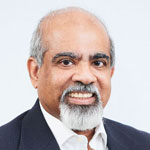Voices from Asia: Andrew Spurgeon

From an Elder’s Papyrus and Black Ink
When CTIA leaders asked me, “From your perspective, how can theology help the church in Asia? How can the Asian church help theologians?” my first thought was 2 John, a letter by a presbyter (an elderly man) to a lady and her children—most likely, a metaphor for a young church like many Asian churches. That presbyter didn’t wish to write a long letter wasting papyri and black ink; instead, he preferred to speak to them face to face (v. 12). Yet what he wrote profoundly fits these questions.
Outline of 2 John
The author has written the letter in a chiastic structure, emphasizing the middle of the sections. The first and second halves parallel each other in many ways.
v. 1a – Greetings
v. 1b-3 – Introduction
v. 4-6 – Appreciation (for love, obedience, and truth)
v. 7 – Report (of anti “Christ-in-the-flesh”)
v. 8 – Exhortation (apollumi versus apolambano)
v. 9 – Report (remain in Christ’s teachings)
v. 10-11 – Appropriation (of tough love to protect the truth)
v. 12 – Conclusion
v. 13 – Greetings
How Can Theology Help the Church?
The presbyter wrote the letter because of an imminent threat: some deceivers (planoi) were saying that Jesus Christ had not come in the flesh (v. 7). They were attacking the core doctrine of Christian faith: Jesus being born with a fleshly body (John 1:14) and resurrecting in a fleshly body (Luke 24:39). Their confession made them anti-Christs,2 people who opposed Christ’s nature and teachings, including walking in the Father’s commandment to love one another (v. 4-6). Unlike the deceivers, the church must obey and have fellowship with the Father and the Son (v. 9).
Church history is fraught with attacks on the nature of Jesus’s birth and resurrection, and Asian churches are no exception to this pattern. Theology rooted in the Scriptures and the church’s orthodox history can help Asian churches ward off such deceivers. Theological schools, research institutions, and theologians are the first responders to threats coming from those who wish to deceive the Asian churches. They are like the presbyter in 2 John, who cautions the church against unorthodox teachings. They cannot replace the churches’ vigilance against theological threats. But orthodox theology keeps churches healthy and keeps falsehood at bay.
How Can the Asian Church Help Theologians?
The presbyter’s center most exhortation was addressed to the church. He said,
“You watch yourselves, so you do not destroy (apollumi) what you have worked for, but you receive (apolambano) a complete compensation” (v. 8).3
Another tradition of Greek manuscripts changes the pronouns from “you” to “we.”
You watch yourselves, so we do not destroy (apollumi) what we have worked for, but we receive (apolambano) a complete compensation.”4
Regardless of the traditions, the message is the same: when churches aren’t carefully watching for the deceivers, they can destroy (apollumi) what they worked for, resulting in them not receiving (apolambano) their complete compensation. By alliterating, the author expected his audience to remember this crucial message: don’t destroy but receive. But he didn’t explain what that complete compensation was, although he would have told them in person. It wouldn’t be totally wrong to guess their complete compensation was their full fellowship with the Father and the Son and loving one another in truth.
In the past, theologians, theological institutions, and theological research centers have worked in isolation from churches and become irrelevant ivory towers. During my first year as a teacher in a seminary in India, a pastor told me, “I do not like theologians; they confuse Christians with their lofty words.” Asian churches can help theologians by including them in their arsenal of tools, telling them where they need help, and accepting their research with a grain of salt. Just as a body is dead without the spirit (Jas 2:26), theologians are irrelevant and unneeded without churches and people to serve.
Christian leaders (including theologians) often gain celebrity status devoid of accountability for and rebuke of their unbiblical lifestyle. As such, we’ve seen several leaders, including Asians, fall greatly. The churches can help theologians and leaders by holding them accountable and ostracizing them when necessary. John said:
“If anyone comes to you and does not bear Christ’s teachings, do not receive (lambano) such a person into your homes, and do not say “greetings” to that person because anyone who says “greetings” fellowships with that person’s evil works” (v. 10–11).
Asian churches must strongly oppose deceivers—even if they are powerful celebrities—by not receiving them in their fellowship or greeting them warmly. This is because fellowshipping with them implies agreeing with their evil works and not fellowshipping with the Father and the Son. Receiving them (lambano, v. 10) would cause the churches not to receive (apo-lambano, v. 8) their complete compensation. Theologians and Christian leaders are accountable to the churches, and the churches must evaluate them and approve or reject them.
Conclusion
For far too long, Asian churches and Christians have accepted what the Western churches and theologians taught as pure theology and what other regions (Latin America, Africa, and Asia) taught as contextualized theology. There is no pure theology; all theologies are contextual, as they should be. Just as Americans eat bread, Italians eat pasta, and Indians eat rice as staples, theologies need to be culturally and contextually appropriate. Churches with people from diverse cultures should lead the way in identifying where the needs are, and theologians should evaluate the scriptures and church history to form theologies to address those needs. Then, the churches can put orthodox, contextual theologies to work to strengthen the body of Christ. This is a healthy symbiotic relationship.
- 1 Apollumi = “destroy” and apolambano = “receive” — “Watch yourself not to destroy (apollumi) what we have worked for but receive (apolambano) a full wage/reward” (v. 8).
- 2 The preposition anti means “against” or “opposed to.”
- 3 All translations are by the author.
- 4 The majority text has this variation and represented by KJV.

